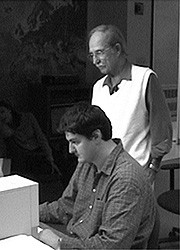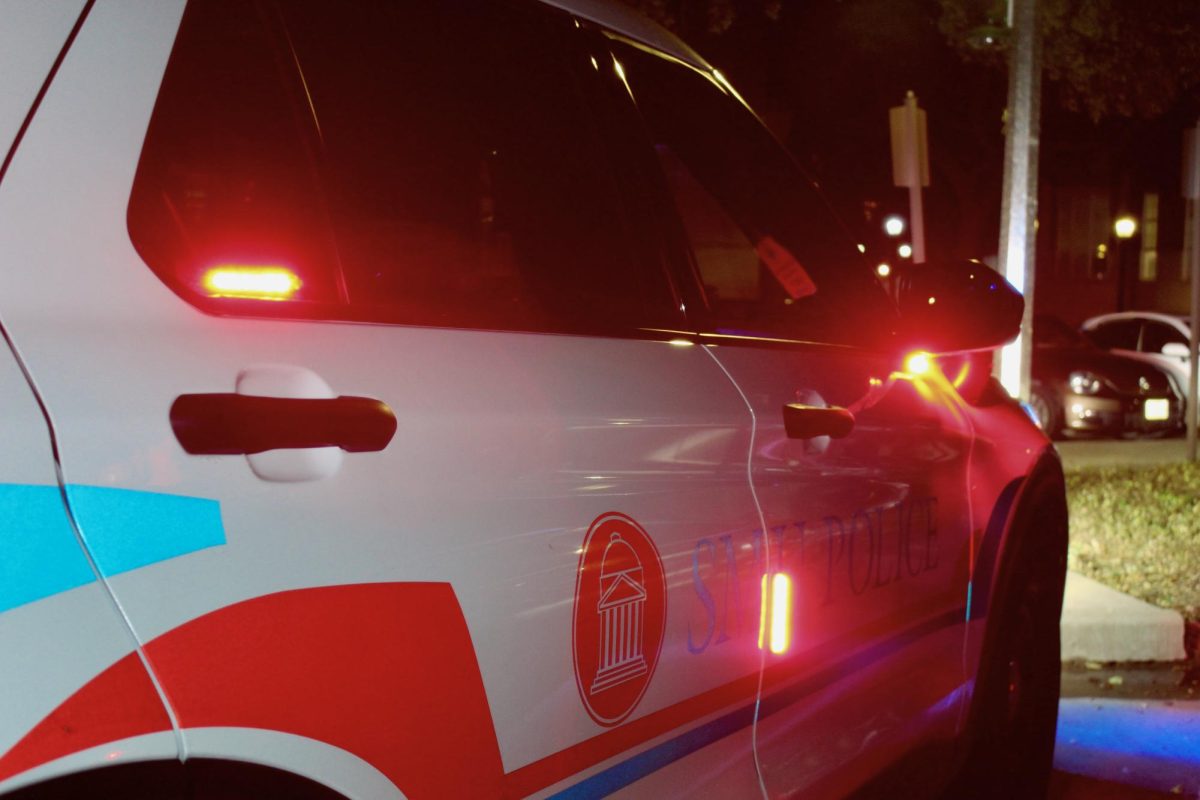
Professors study Columbia’s final moments
As the thunder of Columbia’s demise rumbled across Texas skies Saturday, SMU engineering and geology professors began their own investigation into the mystery of Columbia’s final moments. They are using information provided by NASA and data they have accumulated themselves.
Professor Eugene T. Herrin, a seismology expert in the geology department, has access to ultra-sensitive seismic sensory stations across the world. He has studied earthquakes and looked for the presence of quarks, the smallest known part of neutrons and protons, with his equipment.
Herrin is the only known source to have recorded and charted the sounds heard over Texas.
“I have no doubt that what we heard in Dallas was an explosion,” Herrin said. “People only have to look at the sound pattern of a sonic boom emitted by Columbia and compare it to the pattern to see the difference.”
Herrin sent copies of his research to NASA and has shared it with press agencies as people grapple with the disaster and try to understand what happened in those final moments.
Not all SMU experts agree with Herrin’s assessment.
Howell Watson retired from teaching mechanical engineering at SMU after 32 years and has become a specialist in recreating events based on wreckage.
“People over the age of 40 will have memories of sonic booms. They used to be quite common in the earlier days,” Watson said. “What was heard was a series of sonic booms and not the explosion.”
Watson said that as a piece of the shuttle entered the atmosphere in excess of the speed of sound, a sonic boom occurred.
He explained that the size of the boom depends on the size of the piece of debris.
“This corresponds perfectly with a chart showing multiple peaks of sound at different levels,” Watson said.
Watson believes that the shuttle was already in pieces before it reached Texas.
“The crew module is heavily reinforced, so it would have been intact still, but the shuttle crew was already doomed,” Howell said. “I believe that some tiles were knocked off or loose during the ascent. Everything escalated from there.”
Howell said that re-entry is when the shuttle takes the hardest pounding and has the highest temperature exposure.
If a small surface area were bare of tiles, the area exposed would have been exposed to temperatures in excess of 1000 degrees Fahrenheit. At that point aluminum and other metals start to become pliant or melt. As the small bare area heated up, the rest of the metal around it would begin heating up – much like a pot does when set on a hot burner. As the adjacent parts heated up, tiles would have begun to loosen and started falling off, especially as they were buffeted by the atmosphere.
Howell believes this is what happened on the left wing. He draws this conclusion because of the failed sensors and high temperatures NASA measured there. Eventually, the high pressure and temperature weakened the wing’s support structure and caused it to fall off.
“After that, the shuttle would have gone into a spin. It would have lost its right wing then the engines next,” Howell said. “The main module would have continued on in a straight path, shedding pieces as it went. That’s why you have some large pieces up north in and around Titus County with the remains being found around Sabine County.”.
Milton Gosney, electrical engineering professor, agrees with Watson’s sonic boom theory based on the sequence of electrical failures reported by NASA.
“First there were the failing sensors then the increased temperatures in the left wing,” Gosney said. “For those things to have happened, the wing had to have exposed surface areas building up heat. The normal heat build up at that time is no more than 15 degrees Fahrenheit.”
NASA reported a rise of between 30 and 60 degrees Fahrenheit.
Herrin was not available to respond to the alternate theory presented by Watson.
Watson feels certain that the crew members were already dead during the final moments.
“Their suits are tied with the engines and electrical systems. The suits would have failed and they would have asphyxiated,” Howell said. “They would have only had a minute or two of consciousness, then they would have gone to sleep. At least, I hope to God that’s true.”
Gosney also believes that the shuttle was too badly damaged to recover prior to entering the skies over Texas.
“They were on auto-pilot at the time,” Gosney said. “The on-board computer would have been trying to compensate for the drag on the left wing from the lost tiles. It would have been over before the crew could have known what was happening.”
NASA will not comment on any of the professors’ theories of until the agency has gathered all available data.
Gosney said that people have been warning both NASA and the government for a long time about the consequences of severe budget cuts on the program.
“No one was taking it seriously until a disaster occurred. It was only a matter of time,” Gosney said. “We should be spending more on the space research, not less. We need what the space program provides too much to lose it.”
NASA’s research has been instrumental in the development of CAT scans, MRI’s and other medical and scientific achievements.
“The average person benefits the most from the program,” Gosney said. “The knowledge that we obtain from NASA allows people to go where they never could have gone before.”












